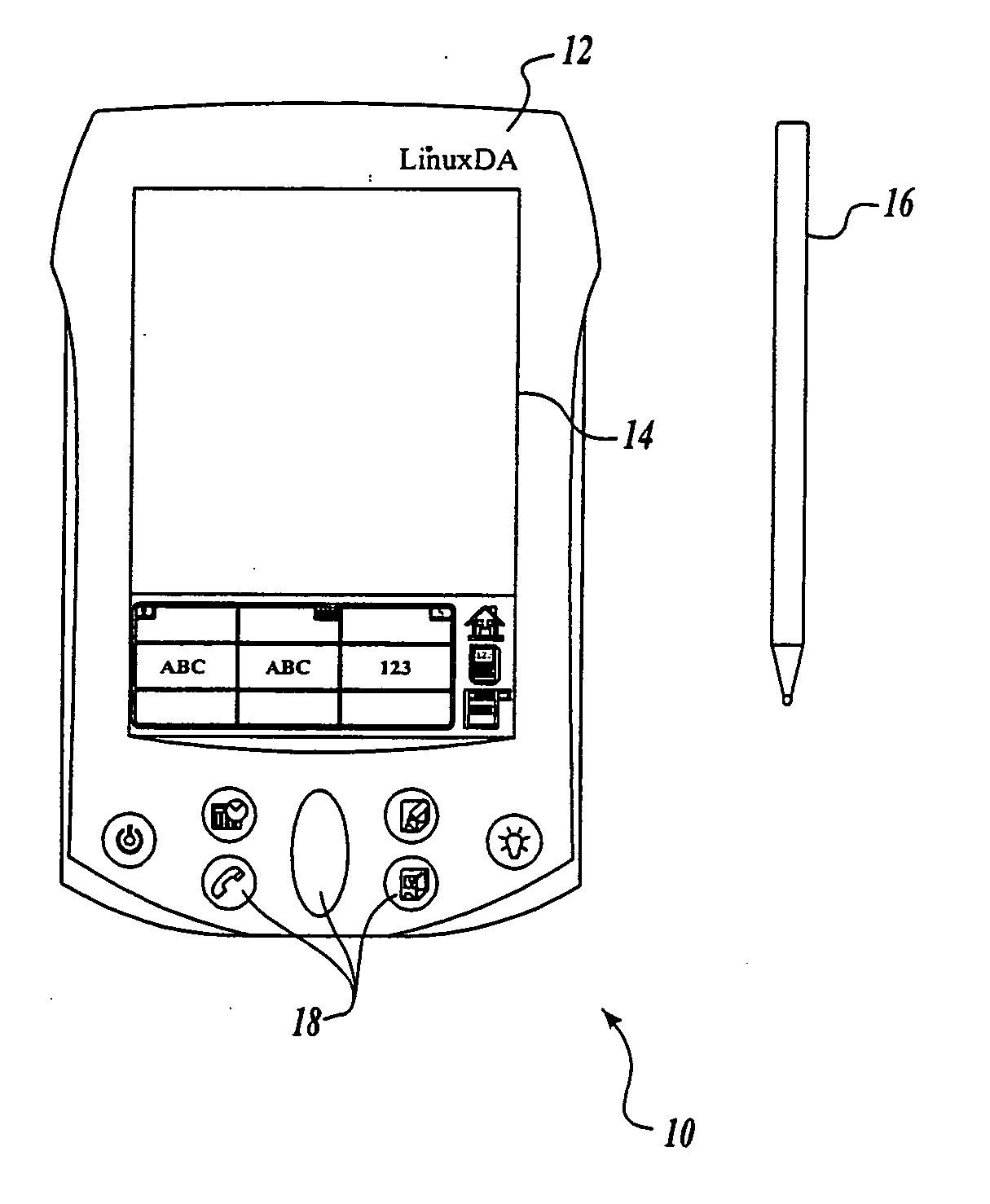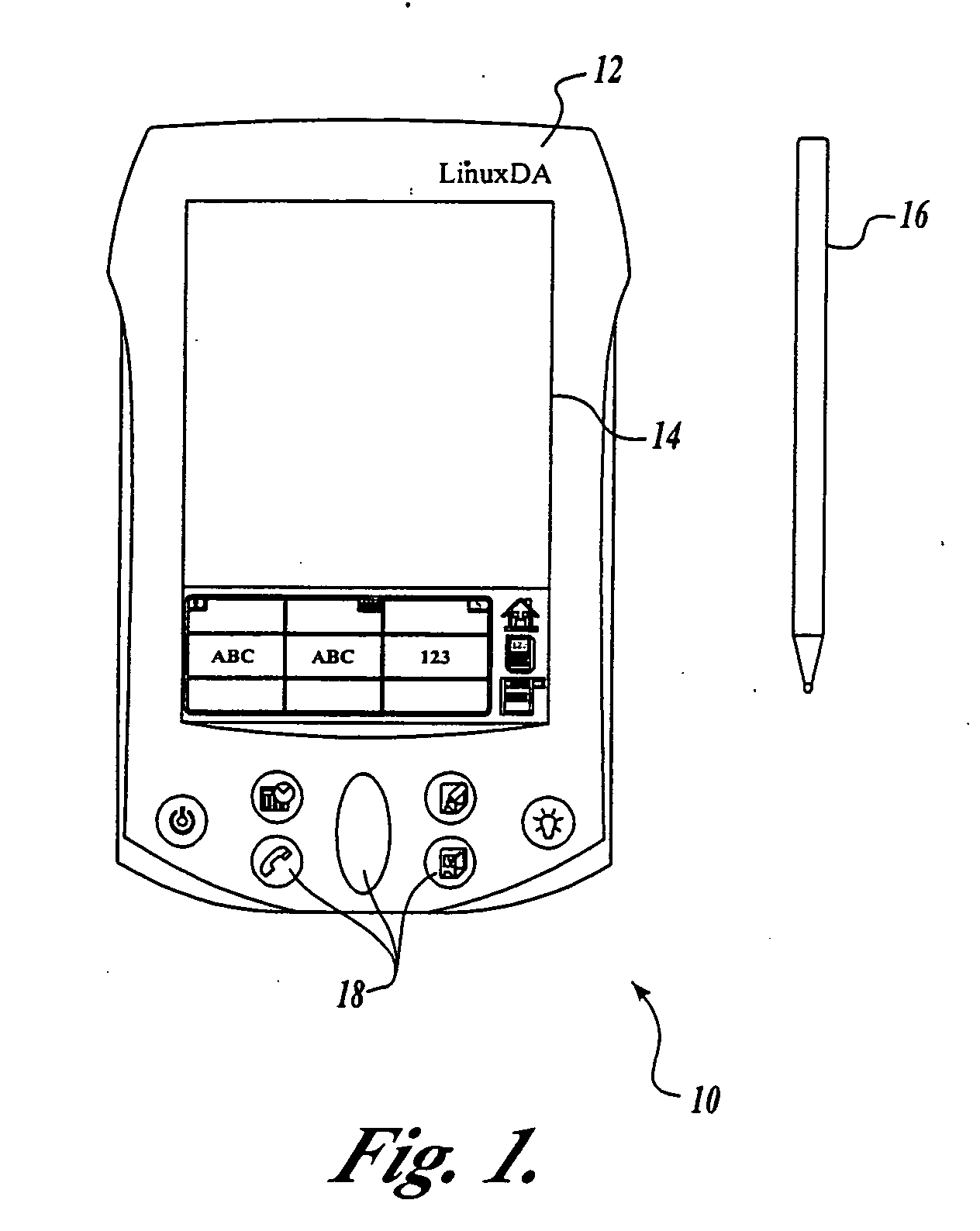System and method of pen-based data input into a computing device
a computing device and data input technology, applied in the field of data input into a computer system, can solve the problems of touch typing data entry, keyboards are generally unacceptable as data entry means, and cannot accommodate traditional keyboard-based data entry,
- Summary
- Abstract
- Description
- Claims
- Application Information
AI Technical Summary
Benefits of technology
Problems solved by technology
Method used
Image
Examples
Embodiment Construction
[0032] The present invention is directed to a system and method for pen-based handwritten and keystroke data input into a computer system. As illustrated with reference to FIG. 1, a preferred computer system 10 utilizing pen-based data input minimally includes a handheld or portable computer such as a Personal Digital Assistant (PDA) 12 having a digitizer pad 14, a data entry pen 16 and optionally one or more buttons 18 located on the PDA 12 used to selectively alter the functionality of the PDA. The pen and digitizer pad combination allow a user to hold the PDA 12 in one hand While using the pen 16 to input handwritten or keystroke data via the digitizer pad 14.
[0033] The digitizer pad 14 of the present invention is preferably divided into two or more areas according to the predetermined functionality of the PDA 12. As shown with reference to FIG. 2, a preferred digitizer pad 14 includes a viewing area 20, a handwriting input area 22 and a function-selector area 24. While the view...
PUM
 Login to View More
Login to View More Abstract
Description
Claims
Application Information
 Login to View More
Login to View More - R&D
- Intellectual Property
- Life Sciences
- Materials
- Tech Scout
- Unparalleled Data Quality
- Higher Quality Content
- 60% Fewer Hallucinations
Browse by: Latest US Patents, China's latest patents, Technical Efficacy Thesaurus, Application Domain, Technology Topic, Popular Technical Reports.
© 2025 PatSnap. All rights reserved.Legal|Privacy policy|Modern Slavery Act Transparency Statement|Sitemap|About US| Contact US: help@patsnap.com



